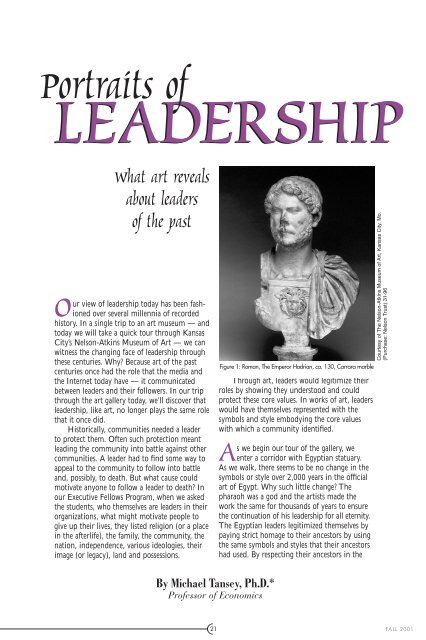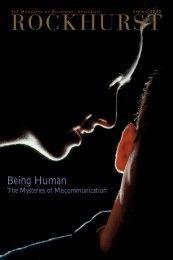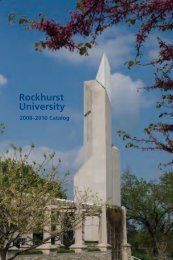in the Jesuit Tradition - Rockhurst University
in the Jesuit Tradition - Rockhurst University
in the Jesuit Tradition - Rockhurst University
You also want an ePaper? Increase the reach of your titles
YUMPU automatically turns print PDFs into web optimized ePapers that Google loves.
Portraits ofLEADERSHIPWhat art revealsabout leadersof <strong>the</strong> pastOur view of leadership today has been fashionedover several millennia of recordedhistory. In a s<strong>in</strong>gle trip to an art museum — andtoday we will take a quick tour through KansasCity’s Nelson-Atk<strong>in</strong>s Museum of Art — we canwitness <strong>the</strong> chang<strong>in</strong>g face of leadership through<strong>the</strong>se centuries. Why? Because art of <strong>the</strong> pastcenturies once had <strong>the</strong> role that <strong>the</strong> media and<strong>the</strong> Internet today have — it communicatedbetween leaders and <strong>the</strong>ir followers. In our tripthrough <strong>the</strong> art gallery today, we’ll discover thatleadership, like art, no longer plays <strong>the</strong> same rolethat it once did.Historically, communities needed a leaderto protect <strong>the</strong>m. Often such protection meantlead<strong>in</strong>g <strong>the</strong> community <strong>in</strong>to battle aga<strong>in</strong>st o<strong>the</strong>rcommunities. A leader had to f<strong>in</strong>d some way toappeal to <strong>the</strong> community to follow <strong>in</strong>to battleand, possibly, to death. But what cause couldmotivate anyone to follow a leader to death? Inour Executive Fellows Program, when we asked<strong>the</strong> students, who <strong>the</strong>mselves are leaders <strong>in</strong> <strong>the</strong>irorganizations, what might motivate people togive up <strong>the</strong>ir lives, <strong>the</strong>y listed religion (or a place<strong>in</strong> <strong>the</strong> afterlife), <strong>the</strong> family, <strong>the</strong> community, <strong>the</strong>nation, <strong>in</strong>dependence, various ideologies, <strong>the</strong>irimage (or legacy), land and possessions.Figure 1: Roman, The Emperor Hadrian, ca. 130, Carrara marbleThrough art, leaders would legitimize <strong>the</strong>irroles by show<strong>in</strong>g <strong>the</strong>y understood and couldprotect <strong>the</strong>se core values. In works of art, leaderswould have <strong>the</strong>mselves represented with <strong>the</strong>symbols and style embody<strong>in</strong>g <strong>the</strong> core valueswith which a community identified.As we beg<strong>in</strong> our tour of <strong>the</strong> gallery, weenter a corridor with Egyptian statuary.As we walk, <strong>the</strong>re seems to be no change <strong>in</strong> <strong>the</strong>symbols or style over 2,000 years <strong>in</strong> <strong>the</strong> officialart of Egypt. Why such little change? Thepharaoh was a god and <strong>the</strong> artists made <strong>the</strong>work <strong>the</strong> same for thousands of years to ensure<strong>the</strong> cont<strong>in</strong>uation of his leadership for all eternity.The Egyptian leaders legitimized <strong>the</strong>mselves bypay<strong>in</strong>g strict homage to <strong>the</strong>ir ancestors by us<strong>in</strong>g<strong>the</strong> same symbols and styles that <strong>the</strong>ir ancestorshad used. By respect<strong>in</strong>g <strong>the</strong>ir ancestors <strong>in</strong> <strong>the</strong>Courtesy of The Nelson-Atk<strong>in</strong>s Museum of Art, Kansas City, Mo.(Purchase: Nelson Trust) 31-96By Michael Tansey, Ph.D.*Professor of Economics21 FALL 2001
















